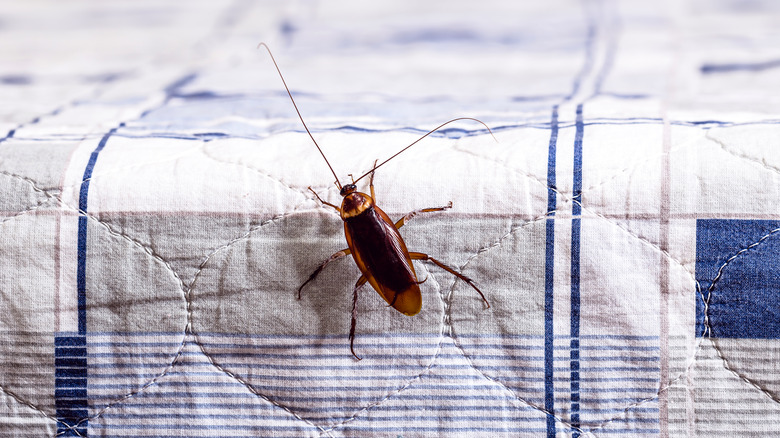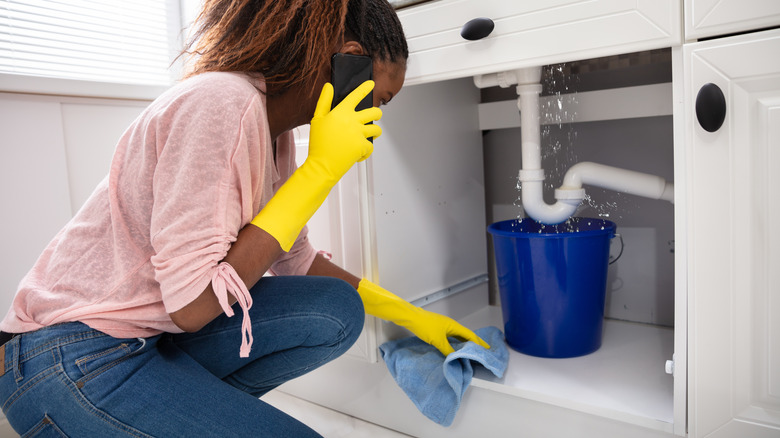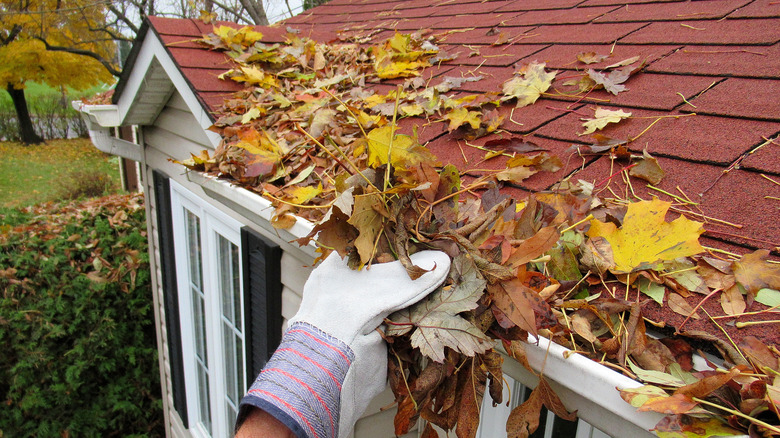The Plumbing Mistake That Could Result In A Major Pest Problem
When you start seeing more pests than usual around your home, it might be time to play detective and check your plumbing. Surprisingly, those seemingly harmless leaks in your pipes could be the main attraction for these unwelcome visitors. Plumbing leaks create a perfect habitat for many pests, providing the moisture and humid environment in which they thrive. Cockroaches, for example, are notorious for seeking out damp areas, as they require constant access to water. Likewise, silverfish and even rodents are drawn to these moist conditions. Generally speaking, these pests are particularly fond of damp areas provided by plumbing issues, be it a leaky faucet in the bathroom or kitchen or even more significant problems outside, like sewer lines and main water leaks.
But pests aren't the only concern with these leaks. Excess moisture can also lead to mold growth, which is another headache you definitely want to avoid. Mold in your home isn't just an aesthetic issue; it can pose serious health risks, particularly for those with allergies or respiratory problems. In essence, a small leak in your plumbing isn't just a minor inconvenience; it's a beacon for pests and a breeding ground for mold. So, addressing these leaks early on is crucial. A little drip under the sink or a subtle leak behind the wall might seem insignificant now, but over time, these can escalate into more serious concerns.
Indoor leak sources and solutions
Let's zoom in on the indoor leaks that might be turning your home into a pest paradise, starting with the classic — the leaky faucet in your kitchen or bathroom. This issue often stems from a worn-out washer or a damaged O-ring. To fix this, you'll first need to shut off the water supply. Then, dismantle the faucet handle; this usually involves removing a screw, which is often hidden under a decorative cap. Once you access the inner mechanism, replace the faulty washer or O-ring and reassemble everything.
Another common yet frequently missed problem is leaks underneath appliances, like your washing machine. These leaks can be sneaky, often going unnoticed until there's a noticeable increase in pest activity or visible water damage. The cause could range from a loose connection in the hoses to a faulty seal. While some of these issues can be diagnosed and fixed with a bit of DIY, often you'll need a professional to properly repair them. You can place a tray underneath the appliance so the water can collect until it's fixed.
Lastly, don't overlook leaks in your toilet flapper valve. The usual suspects are wear and tear or mineral buildup. To replace it, first shut off the water supply to the toilet and flush to drain the tank. Unclip the old flapper and clip on a new one; they're universally sized and readily available at hardware stores. Turn the water back on, and you should see an end to the leak.
Outdoor leak sources and solutions
Outdoor leaks can be a bit trickier to spot, but they're equally important in your quest to keep pests at bay. Let's start with blocked gutters, a common yet often overlooked problem. Gutters are designed to divert water away from your home, but when they're blocked with leaves, twigs, or debris, water can overflow and create damp areas around your property. This excess moisture is a magnet for pests. The solution? Regular gutter cleaning and maintenance. Ensure your gutters are clear, especially after autumn leaves fall or during heavy rain seasons. Installing gutter guards can also be a great preventive measure, keeping debris out and allowing water to flow freely.
Next are sewer line leaks — these are serious business. They not only damage your property but also create a perfect breeding ground for rodents. The usual suspects? Blockages and tree root intrusions are big ones. Roots grow toward the moisture and can break into the pipes. Old, corroded pipes are another common cause. Fixing a sewer line leak is definitely a job for professionals. It often involves some digging and replacing sections of the pipe. It's a bit of an undertaking but necessary to prevent pests from being drawn to the area.
Finally, there's the main water line break, which is a nightmare scenario. Causes range from aging infrastructure to unexpected shifts in the ground. Like sewer line leaks, fixing a main water line break is a job for the pros.


